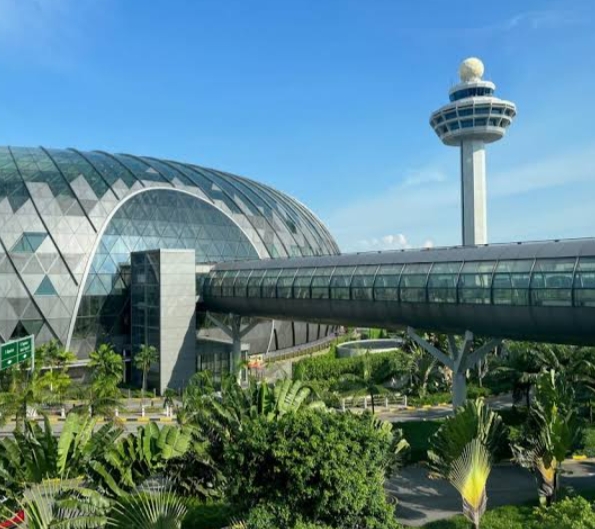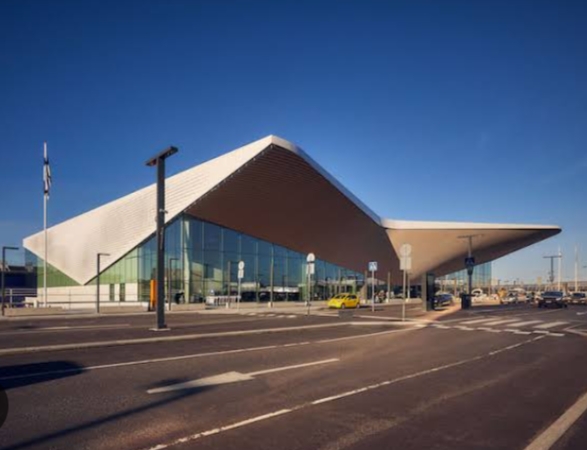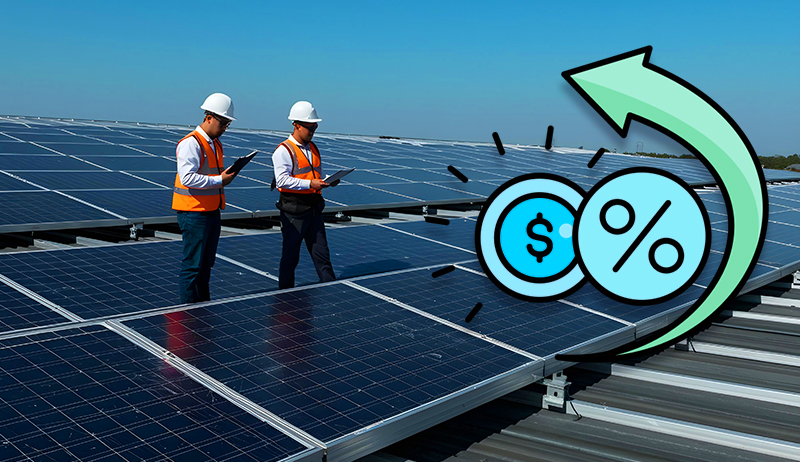Introduction Best Sustainabile Airport
Air travel is a vital part of our interconnected world, but it’s also associated with environmental challenges. In response to the pressing need for sustainability, airports around the globe have been striving to reduce their ecological footprint.
These airports are not only hubs for transportation but also champions of environmental responsibility.
In this article, we will explore some of the best sustainable airports that are leading the way in eco-friendly practices, energy efficiency, and innovative solutions to make air travel more environmentally friendly. Their efforts not only minimize their impact on the environment but also serve as inspiring examples for the aviation industry as a whole.
The concept of a “best” sustainable airport
The concept of a “best” sustainable airport can vary depending on various factors, including location, design, and operational practices. However, several airports around the world are recognized for their sustainable initiatives.
Some notable ones include:
Hamad International Airport, Qatar: It has received several awards for its commitment to sustainability, including LEED Gold certification for the terminal and other sustainable practices.
Changi Airport, Singapore: It’s known for its energy-efficient design, extensive green spaces, and commitment to water and waste management.
Helsinki-Vantaa Airport, Finland: This airport is carbon-neutral and has invested in renewable energy sources, as well as reducing its carbon emissions.
San Francisco International Airport, USA: It’s focused on sustainability with LEED Gold terminals, waste diversion programs, and a commitment to renewable energy.
Oslo Gardermoen Airport, Norway: It’s powered by renewable energy sources, has efficient waste management, and focuses on reducing its carbon footprint.
These airports showcase various aspects of sustainability, from energy efficiency to waste reduction and carbon neutrality, making them among the best in their commitment to sustainable practices. However, what’s considered the “best” sustainable airport may change over time as new initiatives are developed and standards evolve.
Hamad International Airport
Hamad International Airport (HIA) in Doha, Qatar, is a remarkable example of a sustainable and environmentally conscious airport. Since its opening in 2014, HIA has consistently demonstrated a commitment to reducing its environmental impact and providing a world-class passenger experience.
Key Sustainable Initiatives:
1. LEED Gold Certification: The airport’s terminal has achieved Leadership in Energy and Environmental Design (LEED) Gold certification, a globally recognized standard for sustainable building practices.
2. Energy Efficiency: HIA prioritizes energy efficiency with features like LED lighting and an energy-efficient air conditioning system. The airport also utilizes a significant amount of solar energy to power its operations.
3. Waste Management: HIA places a strong emphasis on waste management and recycling, diverting a substantial portion of its waste from landfills.
4. Water Conservation: The airport employs water-saving technologies and practices, such as efficient irrigation systems and water recycling, to reduce water consumption.
5. Transportation: HIA supports sustainable transportation by providing efficient public transportation connections and electric vehicle charging stations.
6. Green Spaces: The airport’s design incorporates lush greenery and indoor gardens, enhancing air quality and aesthetics for travelers.
7. Carbon Neutrality: HIA is actively working towards carbon neutrality, implementing measures to reduce its carbon emissions and offsetting what remains.
These sustainability initiatives at Hamad International Airport reflect its dedication to minimizing its environmental impact while maintaining a high standard of service and comfort for passengers. It stands as a model for airports worldwide in their pursuit of sustainability and responsible growth.
Changi Airport
Singapore’s Changi Airport is renowned not only for its exceptional service but also for its remarkable sustainability initiatives. It sets a high standard for environmental responsibility within the aviation industry.
Key Sustainable Initiatives:
1. Energy Efficiency: Changi Airport emphasizes energy efficiency in its operations, utilizing energy-efficient lighting and air conditioning systems, as well as optimizing energy use across its terminals.
2. Greenery: The airport is known for its lush green spaces, including the Jewel Changi Airport, a stunning indoor forest with a cascading indoor waterfall. These green areas not only enhance the passenger experience but also contribute to improved air quality.
3. Water Management: Changi Airport practices responsible water management, utilizing rainwater harvesting and recycling systems to reduce water consumption. It also implements water-efficient plumbing fixtures.
4. Waste Reduction: The airport has robust waste management and recycling programs, diverting a significant amount of waste from landfills.
5. Solar Power: Changi Airport incorporates solar panels and solar energy systems to reduce its reliance on conventional energy sources.
6. Transportation Options: The airport offers various sustainable transportation options, including electric vehicle charging stations and efficient public transport connections.
7. Environmental Certifications: Changi Airport has obtained environmental certifications like ISO 14001 and is continually working towards reducing its carbon emissions.
8. Innovation: Changi Airport is known for its commitment to innovation and exploring sustainable solutions. It actively participates in sustainability research and development projects.
Changi Airport’s dedication to sustainability extends beyond its infrastructure, encompassing eco-friendly practices in daily operations. Its focus on energy efficiency, green spaces, and waste reduction sets an example for the aviation industry, demonstrating that world-class service and environmental responsibility can go hand in hand.
Helsinki-Vantaa Airport
Helsinki-Vantaa Airport, located in Finland, is a prime example of an environmentally conscious and sustainable airport. It has consistently pursued green initiatives to reduce its carbon footprint and set new standards for sustainability in the aviation industry.
Key Sustainable Initiatives:
1. Carbon Neutrality: Helsinki-Vantaa Airport is carbon-neutral, meaning it offsets its carbon emissions through various initiatives, including the use of renewable energy sources and carbon offset programs.
2. Renewable Energy: The airport is powered by renewable energy sources, including wind and solar power, which significantly reduce its reliance on fossil fuels.
3. Waste Management: The airport has robust waste management practices, with a focus on waste reduction, recycling, and responsible disposal.
4. Energy Efficiency: Helsinki-Vantaa Airport has implemented energy-efficient technologies, such as LED lighting and heating and cooling systems to minimize energy consumption.
5. Eco-Friendly Transportation: The airport offers eco-friendly transportation options, including electric vehicle charging stations and efficient public transportation connections.
6. Water Conservation: Water-saving technologies, such as efficient plumbing fixtures and water recycling, are used to reduce water consumption.
7. Environmental Certifications: The airport has achieved various environmental certifications, including ISO 14001, which validates its commitment to sustainable practices.
8. Sustainable Infrastructure: Helsinki-Vantaa Airport continually invests in sustainable infrastructure, with a focus on minimizing its environmental impact.
The sustainability efforts of Helsinki-Vantaa Airport make it a role model for other airports seeking to reduce their ecological footprint. By actively pursuing carbon neutrality, investing in renewable energy sources, and implementing various eco-friendly practices, the airport demonstrates how environmental responsibility can coexist with efficient and comfortable air travel.
San Francisco International Airport (SFO)
San Francisco International Airport, located in California, is well-regarded for its commitment to sustainability and environmentally responsible practices. It has implemented a range of initiatives to minimize its environmental impact and set an example for sustainable airport operations.
Key Sustainable Initiatives:
1. LEED Certification: Several of the airport’s terminals have achieved Leadership in Energy and Environmental Design (LEED) certification, showcasing its dedication to sustainable building practices.
2. Renewable Energy: SFO utilizes renewable energy sources, including solar power and biogas, to reduce its reliance on traditional energy sources.
3. Waste Diversion: The airport has a robust waste diversion program, which significantly reduces the amount of waste sent to landfills through recycling and composting.
4. Efficient Transportation: SFO encourages sustainable transportation options, including public transit, electric vehicle charging stations, and a shared ride program to reduce single-occupancy vehicle trips.
5. Water Conservation: The airport employs water-saving technologies and practices, such as efficient irrigation systems, to reduce water consumption.
6. Sustainable Concessions: SFO encourages its concessionaires to adopt sustainable practices, including offering locally-sourced and eco-friendly products.
7. Green Building Design: SFO incorporates environmentally-friendly design features in new construction and renovations, focusing on energy efficiency and environmental responsibility.
8. Environmental Awards: The airport has received numerous awards and recognitions for its sustainable practices, further solidifying its reputation as a leader in sustainability.
San Francisco International Airport’s dedication to sustainability is evident through its energy-efficient infrastructure, waste reduction programs, and commitment to renewable energy sources. These efforts underscore its position as a model for environmentally conscious airport operations in the United States and beyond.
Oslo Gardermoen Airport, Norway
Oslo Gardermoen Airport (Oslo Lufthavn Gardermoen) in Norway is recognized for its strong commitment to sustainability and environmental responsibility. As one of the busiest airports in the Nordic region, it has made substantial efforts to reduce its environmental impact.
Key Sustainable Initiatives:
1. Renewable Energy: The airport is powered by renewable energy sources, including hydroelectric power, which is a clean and sustainable energy option in Norway.
2. Carbon Neutrality: Oslo Gardermoen Airport has taken measures to reduce its carbon emissions and offset the remaining emissions through initiatives like reforestation projects.
3. Energy Efficiency: The airport has implemented energy-efficient technologies and practices, such as LED lighting and energy-saving systems, to reduce energy consumption.
4. Waste Management: It has a strong focus on waste reduction and recycling, diverting a significant portion of its waste from landfills.
5. Sustainable Transportation: The airport promotes eco-friendly transportation options, including electric vehicle charging stations and efficient public transport connections.
6. Environmental Certifications: Oslo Gardermoen Airport has obtained various environmental certifications, demonstrating its commitment to sustainable operations.
7. Passenger Experience: The airport also provides a sustainable and comfortable passenger experience, with features like indoor greenery and environmentally-friendly services.
Oslo Gardermoen Airport’s commitment to renewable energy, waste reduction, carbon neutrality, and energy efficiency makes it a leading example of a sustainable airport. It showcases how an airport can reduce its environmental impact while providing essential transportation services.
Conclusion for Best Sustainabile Airport in The World
The quest for sustainable airport operations has gained prominence in recent years, with airports worldwide embracing eco-friendly practices and innovative solutions.
While many airports are making substantial strides toward sustainability, a few stand out as leaders in this endeavor. Notably, Hamad International Airport in Qatar, Changi Airport in Singapore, Helsinki-Vantaa Airport in Finland, San Francisco International Airport in the USA, and Oslo Gardermoen Airport in Norway have all demonstrated a remarkable commitment to reducing their environmental impact.
These airports have embraced a range of initiatives, including carbon neutrality, renewable energy adoption, energy efficiency, waste management, sustainable transportation options, and green building design. They have earned recognition through environmental certifications, reflecting their dedication to eco-friendly practices and a responsible approach to aviation.
As environmental concerns continue to shape the aviation industry, these airports serve as beacons of sustainability, setting high standards for the entire sector. Their efforts not only minimize their ecological footprint but also inspire other airports to follow suit, paving the way for a more sustainable and responsible future of air travel. While these airports have been highlighted as leaders in sustainability, it is essential to keep in mind that the field of sustainable aviation is dynamic and continually evolving, with more airports joining the ranks of environmental responsibility in the pursuit of a greener future.
https://www.exaputra.com/2023/11/best-sustainabile-airport-in-world.html
Renewable Energy
ACORE Applauds Maryland Gov. Moore’s New Executive Order on Energy Affordability and Reliability
-
Grid Infrastructure -
Policy -
Siting & Permitting Reform -
Technology -
Press Releases
ACORE Applauds Maryland Gov. Moore’s New Executive Order on Energy Affordability and Reliability
ACORE Applauds Maryland Gov. Moore’s New Executive Order on Energy Affordability and Reliability
FOR IMMEDIATE RELEASE
Dec. 19, 2025
WASHINGTON, D.C. — The American Council on Renewable Energy (ACORE) issued the following statement from ACORE President and CEO Ray Long in response to Governor Wes Moore’s announcement of new initiatives to build an affordable and reliable energy future for Maryland.
“ACORE applauds Gov. Wes Moore for setting forth a new series of energy initiatives that seek to stabilize energy bills while ensuring grid reliability and efficiency for Marylanders. In particular, ACORE commends key provisions in the order to increase the deployment of advanced transmission technologies; streamline the siting and permitting of high-voltage transmission, energy storage, and other infrastructure; advance wholesale market reforms; and more. As the country enters a new era of electricity demand, initiatives like Gov. Moore’s will facilitate significant progress toward building a modern and reliable grid needed to maintain economic competitiveness and keep the lights on,” said ACORE President and CEO Ray Long.
###
ABOUT ACORE
For over 20 years, the American Council on Renewable Energy (ACORE) has been the nation’s leading voice on the issues most essential to clean energy expansion. ACORE unites finance, policy, and technology to accelerate the transition to a clean energy economy.
For more information, please visit http://www.acore.org.
Media Contacts:
Stephanie Genco
Senior Vice President, Communications
American Council on Renewable Energy
communications@acore.org
The post ACORE Applauds Maryland Gov. Moore’s New Executive Order on Energy Affordability and Reliability appeared first on ACORE.
https://acore.org/news/acore-statement-on-gov-wes-moores-new-energy-executive-order/
Renewable Energy
Meat–It’s What’s for Dinner, if You Don’t Care about the Animals or the Planet
 We often hear meat-eaters say things like, “If beef isn’t good, why do the manufacturers of plant-based burgers try so hard to make their burgers taste like real meat?”
We often hear meat-eaters say things like, “If beef isn’t good, why do the manufacturers of plant-based burgers try so hard to make their burgers taste like real meat?”
There is no doubt that cow and pig meat tastes and smells great; every vegan on Earth will tell you that.
The problem lies elsewhere, in a) the environmental impact of clearing the rainforests to make room for more cows, and b) the cruelty inherent in factory farming and the slaughtering of the animals.
Meat–It’s What’s for Dinner, if You Don’t Care about the Animals or the Planet
Renewable Energy
FAQs: Your Most Common Commercial Solar Questions Answered
The post FAQs: Your Most Common Commercial Solar Questions Answered appeared first on Cyanergy.
https://cyanergy.com.au/blog/faqs-your-most-common-commercial-solar-questions-answered/
-
Climate Change4 months ago
Guest post: Why China is still building new coal – and when it might stop
-
Greenhouse Gases4 months ago
Guest post: Why China is still building new coal – and when it might stop
-
Climate Change2 years ago
Spanish-language misinformation on renewable energy spreads online, report shows
-

 Greenhouse Gases2 years ago
Greenhouse Gases2 years ago嘉宾来稿:满足中国增长的用电需求 光伏加储能“比新建煤电更实惠”
-
Climate Change Videos2 years ago
The toxic gas flares fuelling Nigeria’s climate change – BBC News
-

 Climate Change2 years ago
Climate Change2 years ago嘉宾来稿:满足中国增长的用电需求 光伏加储能“比新建煤电更实惠”
-

 Carbon Footprint2 years ago
Carbon Footprint2 years agoUS SEC’s Climate Disclosure Rules Spur Renewed Interest in Carbon Credits
-
Climate Change2 years ago
Why airlines are perfect targets for anti-greenwashing legal action



















 Full energy assessment
Full energy assessment



